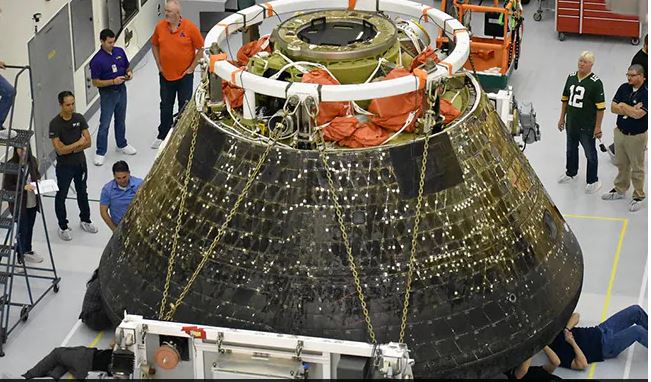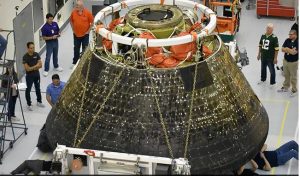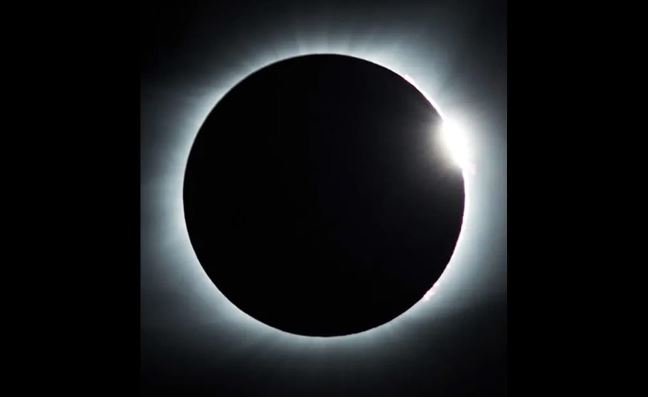
Orion Spacecraft Returns From The Moon As NASA Inspects It.

NASA has commenced inspection of the heat shield and internal payload of the Artemis I Orion Spacecraft.
The Orion space capsule splashed down safely in the Pacific on December 11, completing the Artemis 1 mission- a more than 25-day journey around the moon.
NASA also shared a picture of a team of technicians inspecting the capsule. In the photo, technicians underneath the crew module closely examine the heat shield, which endured temperatures near 5,000 degrees Fahrenheit during reentry through Earth’s atmosphere. The heat shield will be removed from the spacecraft and taken to another facility for further detailed inspections, a release by NASA said.
Not just that the teams are also inspecting the windows of the capsule along with the thermal protection on the back shell panels that cover the spacecraft to protect it from the harsh conditions both in space and during the high-speed, high-heat reentry.
On top of the capsule is the deflated crew module uprighting system, which is a group of five airbags that position the capsule right side up after splashdown and were deflated prior to transport back to Kennedy. While still in the transfer aisle of the facility, engineers are in the process of removing external avionics boxes.
Technicians will take air samples within the capsule ahead of repositioning it into a service stand that will allow access to the interior. Upon opening the hatch, technicians will remove the internal avionics boxes and payloads. After conducting detailed inspections and testing, the avionics boxes will be reused for the Artemis II mission, NASA said.
Orion was recovered by a prepositioned US Navy ship off the coast of Mexico’s Baja California after some initial tests were run, AFP reported. As it reentered the Earth’s atmosphere, the gumdrop-shaped capsule had to withstand a temperature of 2,800 degrees Centigrade (5,000 Fahrenheit) — about half that of the surface of the Sun.
The main goal of this mission was to test Orion’s heat shield — for the day when it carries astronauts.
Source | NDTV





Leave a Reply